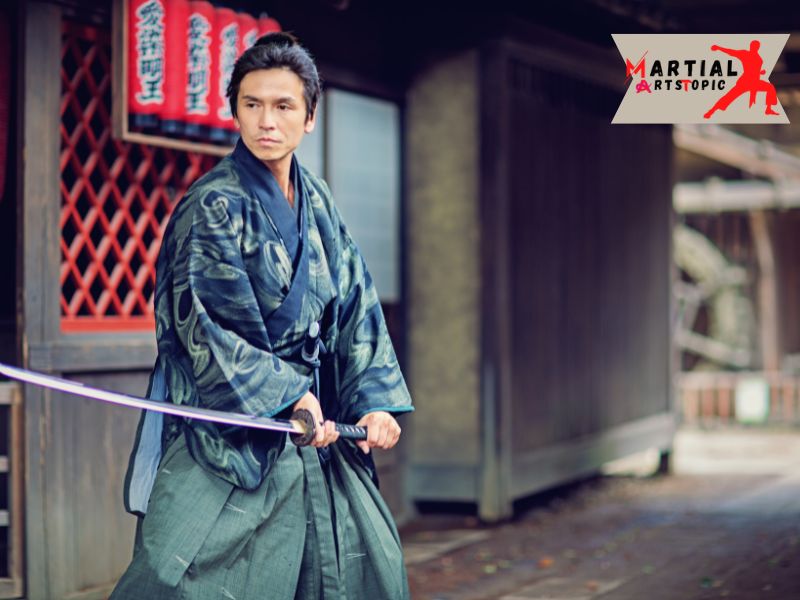
The History and Origins of Naginatajutsu
The History and Origins of Naginatajutsu is a traditional Japanese martial art that has a rich history and deep cultural roots. Derived from the ancient weapon called the naginata, this martial art form has developed over centuries and continues to be practiced today.
The naginata, a long polearm with a curved blade at the end, has been a prominent weapon in Japan since ancient times. Originally used by foot soldiers and samurai warriors, the naginata proved to be a versatile and effective weapon, capable of striking from a distance while providing excellent defense against close combat.
The precise origins of naginatajutsu can be traced back to the Heian period (794-1185) in Japan. During this time, the samurai class emerged, and martial arts began to flourish as a means of training warriors for battle. It was during this period that the art of naginatajutsu started to take shape.
Naginatajutsu gained significant popularity during the Kamakura period (1185-1333) when Japan was plagued by internal conflicts. As battles shifted to more open fields, the naginata became an essential weapon for samurai women. Known as onna-bugeisha, these women warriors played a vital role in defending their households and castles. Naginatajutsu training became an integral part of their education, allowing them to master this weapon and protect their families.
During the Edo period (1603-1868), a time of relative peace in Japan, naginatajutsu transitioned from a battlefield weapon to a martial art practiced for self-defense and personal growth. Dojos, or training halls, were established, and formalized they developed training techniques. The art of naginatajutsu became a popular choice for women, as it allowed them to maintain physical fitness and cultivate discipline.
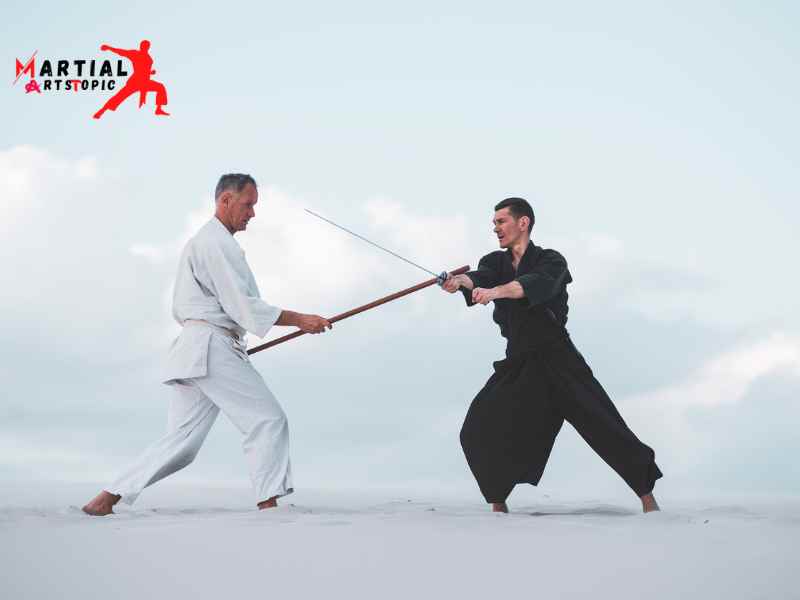
In the modern era, naginatajutsu has strengthened into a competitive sport while still preserving its traditional roots. The All Japan Naginata Federation was established in the 1950s to promote and standardize the practice of naginatajutsu. Today, there are numerous organizations and competitions dedicated to this martial art form, both in Japan and internationally.
The practice of naginatajutsu offers various benefits to its practitioners. Beyond physical fitness and self-defense skills, it cultivates mental discipline, focus, and a deep connection to Japanese history and culture. The techniques and movements involved in naginatajutsu require precision, strength, and agility, making it a challenging yet rewarding martial art to master.
What is Naginatajutsu?
What is Naginatajutsu? Naginatajutsu is a traditional Japanese martial art that focuses on the use of the naginata, a long pole weapon with a curved blade. It combines elements of both armed and unarmed combat, emphasizing grace, agility, and precision in movements. Practitioners of naginatajutsu not only learn how to wield the weapon effectively, but also develop physical fitness, discipline, and a deep understanding of traditional Japanese culture. The art has a rich history and is often practiced in a traditional dojo setting, where students learn from experienced instructors. Naginatajutsu offers a unique blend of physical and mental training, making it a fascinating and rewarding martial art to explore.
The Naginata: Tips and Techniques for Training
What is Naginatajutsu? The Naginata: Tips and Techniques for Training Naginatajutsu, the art of wielding the naginata, is a traditional Japanese martial art that has been practiced for centuries. This weapon, a long pole with a curved blade at the end, combines the best of both worlds – the versatility of a staff and the deadly cutting power of a sword. If you are interested in learning and mastering the naginata, Essential tips and techniques for training in Naginatajutsu, helping you become a skilled practitioner of this ancient art.
- Understanding the Naginata: Before diving into training, it is crucial to have a good understanding of the naginata itself. The naginata typically has a shaft that measures around six to seven feet in length, with a blade that is approximately 1.5 to 2 feet long. Familiarize yourself with the different parts of the naginata, such as the blade, the shaft, and the handguard, known as the tsuba.
- Grip and Stance: A proper grip and stance are vital for effective naginata techniques. Hold the naginata with a firm but relaxed grip, keeping your fingers wrapped around the shaft. Maintain a comfortable posture and stand with your feet shoulder-width apart. This stance will provide stability and allow you to execute powerful strikes with ease.
- Basic Strikes: Mastering the basic strikes is fundamental to Naginatajutsu. Start with the downward strike (shomenuchi), where you bring the naginata down in a chopping motion. Practice the upward strike (kiriage), where you lift the naginata from an inferior position to strike upwards. The horizontal strike (kesagiri) involves slicing the naginata diagonally across your body.
- Footwork: Just like any martial art, footwork is crucial in Naginatajutsu. Learn to move gracefully and efficiently. Practice different footwork techniques, such as the sliding step (ayumi ashi) and the cross step (suri ashi). Remember to maintain your balance at all times and to move in sync with your strikes.
- Sparring: To truly master the naginata, it is essential to engage in sparring sessions with a partner. Sparring will help you develop your timing, accuracy, and awareness. Start with controlled sparring, accumulating the intensity as you become more confident in your skills. Always prioritize safety and wear appropriate protective gear.
- Kata: Kata is a predefined sequence of movements that allows practitioners to practice techniques in a structured manner. Kata training in Naginatajutsu helps develop muscle memory and precision. Learn and practice different kata forms, focusing on fluidity and proper execution of each movement.
- Physical Conditioning: Naginatajutsu requires strength, agility, and endurance. Incorporate exercises that target your upper body, such as push-ups, pull-ups, and shoulder presses. Additionally, include cardiovascular exercises like running or swimming to enhance your overall fitness level.
- Mental Focus: Naginatajutsu is not just about physical strength but also mental focus and discipline. Train your mind to stay calm and focused during training sessions. Meditation and breathing exercises can help improve concentration and reduce stress.
- Seek Guidance: Learning Naginatajutsu is best done under the guidance of a qualified instructor. Find a reputable dojo or training center where you can receive proper instruction and guidance. An experienced instructor will ensure that you are learning the correct techniques and provide valuable feedback to improve your skills.
- Practice Consistently: Consistency is key to mastering any martial art, including Naginatajutsu. Set aside regular practice sessions and make a commitment to train consistently. Practice both the basic techniques and more advanced movements to continuously improve your skills.
The Different Styles of Naginatajutsu
The Different Styles of Naginatajutsu, the art of wielding the naginata, is a traditional Japanese martial art that dates back centuries. Derived from the samurai era, this unique form of combat combines grace, precision, and power. Throughout its long history, various styles of naginatajutsu have been developed, each with its own techniques, philosophies, and training methods.
Tendo Ryu
Tendo Ryu is one of the oldest and most traditional styles of naginatajutsu. Founded in the 16th century, this style emphasizes the use of circular motions and footwork to maintain balance and control. Tendo Ryu practitioners focus on efficient striking techniques, aiming to disable their opponents with minimal effort. Precision and timing are crucial in this style, as they executed every movement with great precision and accuracy.
Jikishinkage Ryu
Jikishinkage Ryu is another ancient style of naginatajutsu that places a strong emphasis on fluidity and speed. Developed in the 17th century, this style combines elements of swordsmanship with naginata techniques. Jikishinkage Ryu practitioners are known for their dynamic footwork and quick, decisive strikes. This style also incorporates defensive techniques such as parries and evasive maneuvers, making it a well-rounded and versatile approach to naginatajutsu.
Hokushin Itto Ryu
Hokushin Itto Ryu, founded in the 19th century, is a style of naginatajutsu that focuses on the concept of one strike, one kill. Its relatively simple yet powerful techniques characterize this style, emphasizing a strong and direct approach. Hokushin Itto Ryu practitioners prioritize developing physical strength and mental focus to deliver devastating blows with the naginata. We know this style for its efficient and effective movements, making it a popular choice among practitioners seeking practical self-defense techniques.
Jissen Ryu
Jissen Ryu is a modern style of naginatajutsu that was developed in the early 20th century. This style combines traditional naginata techniques with elements of other martial arts, such as judo and kendo. Jissen Ryu practitioners focus on practical application and sparring, aiming to develop effective combat skills. This style incorporates various striking, blocking, and grappling techniques, making it a comprehensive and adaptable approach to naginatajutsu.
Sui O Ryu
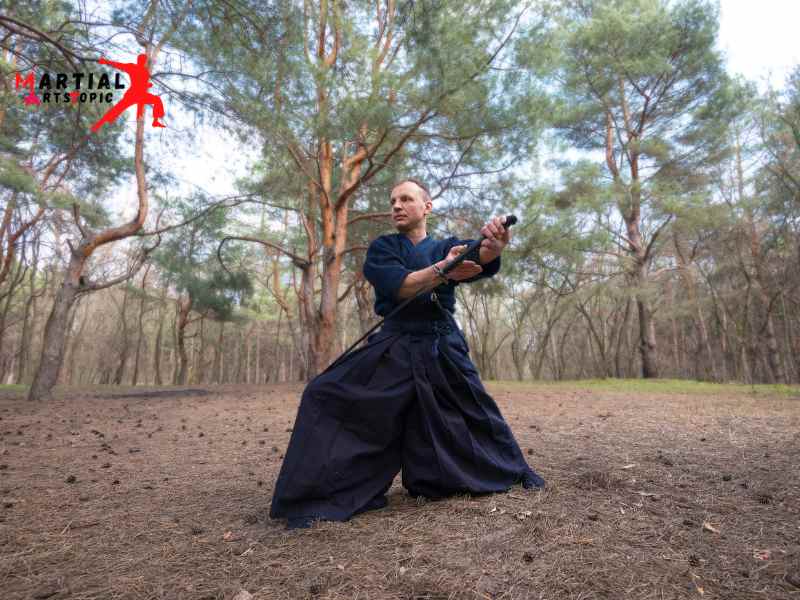
Sui O Ryu is a unique style of naginatajutsu that places a strong emphasis on flexibility and agility. This style, founded in the mid-20th century, incorporates acrobatic movements and spinning techniques to confuse and disorient opponents. Sui O Ryu practitioners excel in fast-paced, dynamic combat, utilizing the naginata’s long reach to maintain distance and control. This style requires a high level of physical dexterity and coordination, making it a challenging yet rewarding choice for practitioners.
Remember to always train under the guidance of a qualified instructor and respect the traditions and principles of naginatajutsu. With dedication and perseverance, you can embark on a lifelong journey of self-discovery and mastery through the art of the naginata.
The Role of Naginatajutsu in Samurai Culture
The Role of Naginatajutsu in Samurai Culture Naginatajutsu, a martial art that revolves around the use of the naginata, played a significant role in the rich and revered samurai culture of feudal Japan. This traditional weapon, a long pole with a curved blade at the end, possessed a unique blend of elegance, versatility, and deadly efficiency.
History of Naginatajutsu
Originating in the 12th century, naginatajutsu became a prominent martial art form during the Kamakura period (1185-1333) in Japan. The naginata, initially used by foot soldiers to fend off cavalry attacks, gradually found its way into the hands of samurai warriors. As the samurai class rose to prominence, the naginata became an integral part of their training and combat repertoire.
Techniques and Training
Naginatajutsu techniques encompass both offensive and defensive maneuvers. Samurai warriors would undergo rigorous training to master the art of wielding this versatile weapon. The naginata provided an extended reach advantage, enabling samurai to maintain distance from their opponents while striking with precision and power.
The techniques involved in naginatajutsu required a blend of strength, agility, and mental focus. Samurai warriors would practice various strikes, blocks, sweeps, and thrusts, honing their skills to perfection. The fluidity of movements and the grace with which they wielded the naginata showcased the artistry of the samurai.
Cultural Significance
Beyond its practical applications on the battlefield, naginatajutsu held significant cultural and symbolic value in samurai culture. The naginata was seen as a symbol of the samurai’s social status and martial prowess. It represented the honor and loyalty that samurai warriors held dear.
Naginatajutsu also played a role in shaping the identity of samurai women, known as “onna-bugeisha.” They trained these female warriors in various martial arts, with naginatajutsu being a central part of their education. The naginata became a powerful tool for women to protect their families, homes, and honor.
The practice of naginatajutsu extended beyond the battlefield. It served as a means of personal development, fostering discipline, focus, and self-control. The samurai code of conduct, known as Bushido, emphasized the importance of these virtues, and the practice of naginatajutsu embodied these principles.
Preservation and Evolution
As the feudal era came to an end and Japan underwent modernization, the role of the samurai diminished. However, naginatajutsu survived, transitioning from a martial art used for combat to a traditional practice for physical fitness and cultural preservation.
Today, naginatajutsu is practiced by dedicated individuals around the world, ensuring that this centuries-old martial art continues to thrive. It serves as a link to Japan’s rich historical heritage and offers a unique glimpse into the life and traditions of the samurai.
From Battlefield to Dojo: The Evolution of Naginatajutsu
From Battlefield to Dojo: The Evolution of Naginatajutsu Naginatajutsu, the art of wielding the naginata, is a traditional Japanese martial art that has a rich and fascinating history. Originally developed as a weapon for samurai warriors on the battlefield, naginatajutsu has developed over the centuries to become a popular martial art practiced in dojos around the world.
The Naginata: A Weapon of the Samurai
The naginata is a polearm weapon with a curved blade on the end, resembling a halberd or glaive. It was first introduced to Japan in the 6th century and quickly gained popularity among the samurai class. The naginata offered a unique advantage in battle, allowing warriors to strike from a distance while also providing a means of defense against mounted opponents.
On the Battlefield: Skills and Techniques
During the feudal era in Japan, naginatajutsu was an essential skill for samurai warriors. They would undergo rigorous training to master the art of wielding the naginata effectively. This training encompassed various techniques, including striking, thrusting, blocking, and grappling. Samurai warriors would use their naginatas to counter enemy attacks, dismount opponents from horseback, and protect their allies on the battlefield.
The Transition to the Dojo: Preserving a Martial Tradition
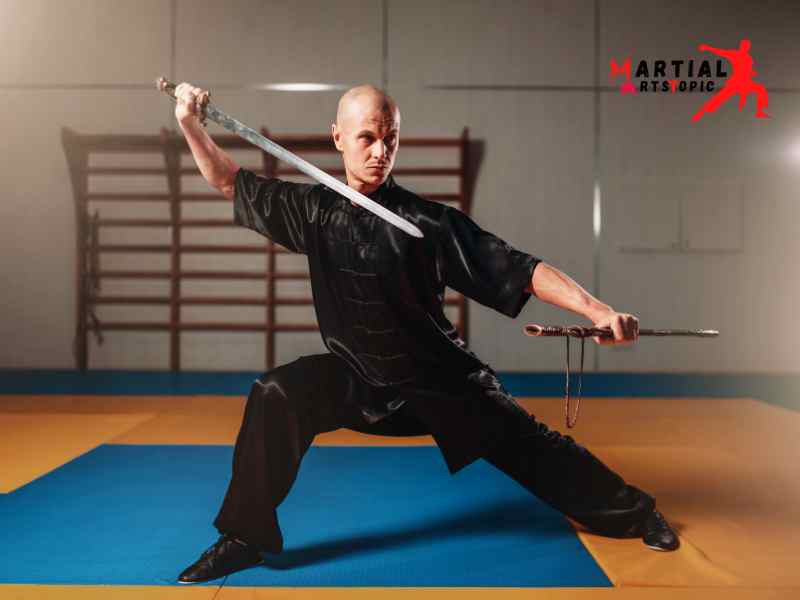
As the feudal period came to an end and Japan entered a more peaceful era, the role of the samurai changed. With the decline of battlefield combat, the focus shifted towards preserving martial arts as a means of physical and mental development. Naginatajutsu, along with other martial arts, underwent a transformation and found its new home in the dojo.
The dojo became a place where practitioners could train and refine their skills in a controlled environment. Naginatajutsu strengthened from a practical battlefield art to self-defense and a means of cultivating physical fitness, mental focus, and spiritual growth. The techniques and principles of naginatajutsu were passed down from generation to generation, ensuring the preservation of this ancient martial art.
Modern-Day Naginatajutsu: A Global Community
Today, naginatajutsu continues to thrive as a martial art practiced by individuals of all ages and backgrounds. It has gained popularity not only in Japan but also around the world. The International Naginata Federation was established to promote the art and organize international competitions and events.
Naginatajutsu training focuses on developing core strength, flexibility, footwork, and precision of movement. Practitioners learn to wield the naginata with grace and efficiency, combining physical techniques with mental discipline. The practice of naginatajutsu offers a balance of physical exercise, self-defense skills, and a connection to Japan’s rich cultural heritage.
Benefits and Challenges of Practicing Naginatajutsu
Naginatajutsu, a traditional Japanese martial art, has a rich history and a dedicated following around the world. This unique discipline combines the use of a long pole weapon called the naginata with various techniques and strategies.
Benefits of Naginatajutsu Practice:
- Physical Fitness and Strength: Naginatajutsu offers a full-body workout, improving strength, endurance, flexibility, and coordination. The repetitive movements and stances engage both upper and lower body muscles, leading to increased overall fitness levels.
- Self-Defense Skills: Naginatajutsu equips practitioners with effective self-defense techniques. By learning how to handle the naginata, individuals gain confidence and the ability to protect themselves in various situations.
- Mental Focus and Discipline: Naginatajutsu requires concentration and focus, allowing participants to develop mental discipline. The practice of mastering precise techniques enhances mental clarity and cultivates a sense of mindfulness.
- Traditional Values and Cultural Appreciation: Engaging in Naginatajutsu allows practitioners to immerse themselves in Japanese culture and tradition. The art form encourages respect, discipline, and humility, fostering a deeper understanding of Japanese heritage.
- Community and Camaraderie: Practicing Naginatajutsu often involves joining a dojo or training group, creating a sense of community and belonging. The camaraderie and support among fellow practitioners make the journey of learning and mastering this martial art more enjoyable.
Challenges of Naginatajutsu Practice:
- Learning Curve: Naginatajutsu requires time and dedication to master. The intricate techniques and movements can be challenging for beginners. However, with proper guidance and consistent practice, progress can be made over time.
- Physical Demands: The physical nature of Naginatajutsu can be demanding, especially for those who are not accustomed to intense physical activity. Building strength, endurance, and flexibility is a gradual process that requires patience and perseverance.
- Risk of Injury: As with any martial art, there is a risk of injury in Naginatajutsu practice. However, this risk can be minimized through proper training, adherence to safety guidelines, and wearing appropriate protective gear.
- Time Commitment: Naginatajutsu is not a martial art that can be mastered overnight. It requires consistent practice and dedication to progress and improvement. Balancing training with work, family, and other commitments can be challenging for some individuals.
- Limited Availability: Depending on your location, finding a Naginatajutsu dojo or qualified instructor may be difficult. However, the popularity of this martial art is growing, making it easier to find training opportunities than in the past.
Safety Measures and Protective Gear
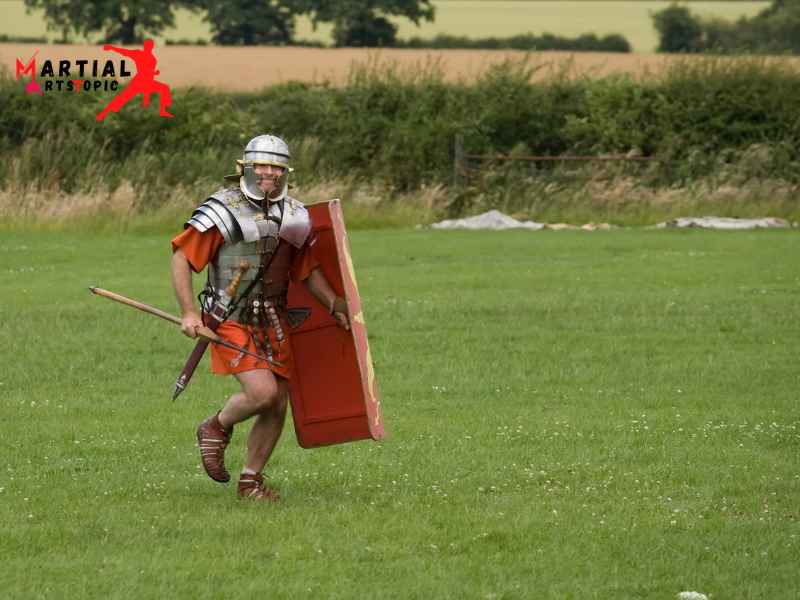
Safety Measures and Protective Gear for Naginatajutsu: Ensuring Your Well-being in Martial Arts When it comes to the practice of Naginatajutsu, a traditional Japanese martial art that focuses on wielding the naginata, the safety of practitioners should always be a top priority. Naginatajutsu is not just about perfecting techniques and mastering the art, but also about taking necessary precautions to prevent injuries. In this blog post, we will explore essential safety measures and protective gear that every Naginatajutsu practitioner should be aware of and utilize.
Proper Training and Instruction
Before engaging in Naginatajutsu, it is crucial to receive proper training and instruction from a qualified instructor. Learning from an experienced practitioner ensures that you receive guidance on correct techniques, footwork, and body positioning, reducing the risk of accidents and injuries. A skilled instructor will also teach you about the importance of safety measures and the proper use of protective gear.
Warm-up and Stretching
Just like any physical activity, warming up and stretching are vital in Naginatajutsu. Engaging in a thorough warm-up routine helps prepare your body for the intense movements involved in the art. Stretching exercises help improve flexibility and reduce the chances of muscle strains or pulls during training sessions. Remember to include dynamic warm-ups, such as arm swings and leg swings, along with static stretches targeting major muscle groups.
Safety Equipment
Protective gear plays a significant role in ensuring the safety of Naginatajutsu practitioners. Here are some essential pieces of equipment to consider:
- Naginata: A properly maintained and balanced naginata is essential for training. Regularly check for any cracks or damage, as a defective weapon can pose a serious threat during practice.
- Men (Headgear): The men, or headgear, is designed to protect your head, face, and neck from strikes and accidental hits. They usually construct it with a sturdy metal grill or visor to shield your face while maintaining visibility.
- Kote (Gloves): Kote are padded gloves that cover your hands and wrists. They provide protection against strikes and absorb impact, reducing the risk of hand injuries.
- Do (Chest Protector): The do, or chest protector, safeguards your torso and abdominal area. They typically made it of sturdy material and absorbs the impact of strikes, minimizing the risk of internal injuries.
- Tare (Hip Protector): The tare is a protective apron that covers your hips and groin area. It offers vital protection during training, particularly when practicing striking or thrusting techniques.
Sparring Etiquette and Controlled Techniques
Maintaining proper sparring etiquette and practicing controlled techniques are crucial for safety in Naginatajutsu. This includes respecting your training partner, maintaining control over strikes, and avoiding excessive force during practice. It is also essential to communicate with your sparring partner, addressing any concerns or discomfort that may arise during training sessions.
Regular Maintenance and Inspections
Regularly inspect and maintain your naginata and protective gear to ensure their effectiveness. Check for any signs of wear and tear, loose fittings, or damage. Replace any worn-out or damaged equipment promptly to avoid compromising your safety during training.
Conclusion
What is Naginatajutsu? Naginatajutsu is a traditional Japanese martial art that holds a rich history and continues to be practiced today. Its unique combination of footwork, striking techniques, and defensive maneuvers make it a versatile and effective form of combat. The discipline and focus required in training not only develop physical strength and skills but also cultivate mental fortitude and discipline. Whether it is for self-defense, physical fitness, or the appreciation of Japanese culture, Naginatajutsu offers individuals a rewarding and fulfilling martial arts experience. By studying Naginatajutsu, practitioners can learn valuable lessons in respect, discipline, and self-improvement, while also preserving an important aspect of Japan’s cultural heritage.
